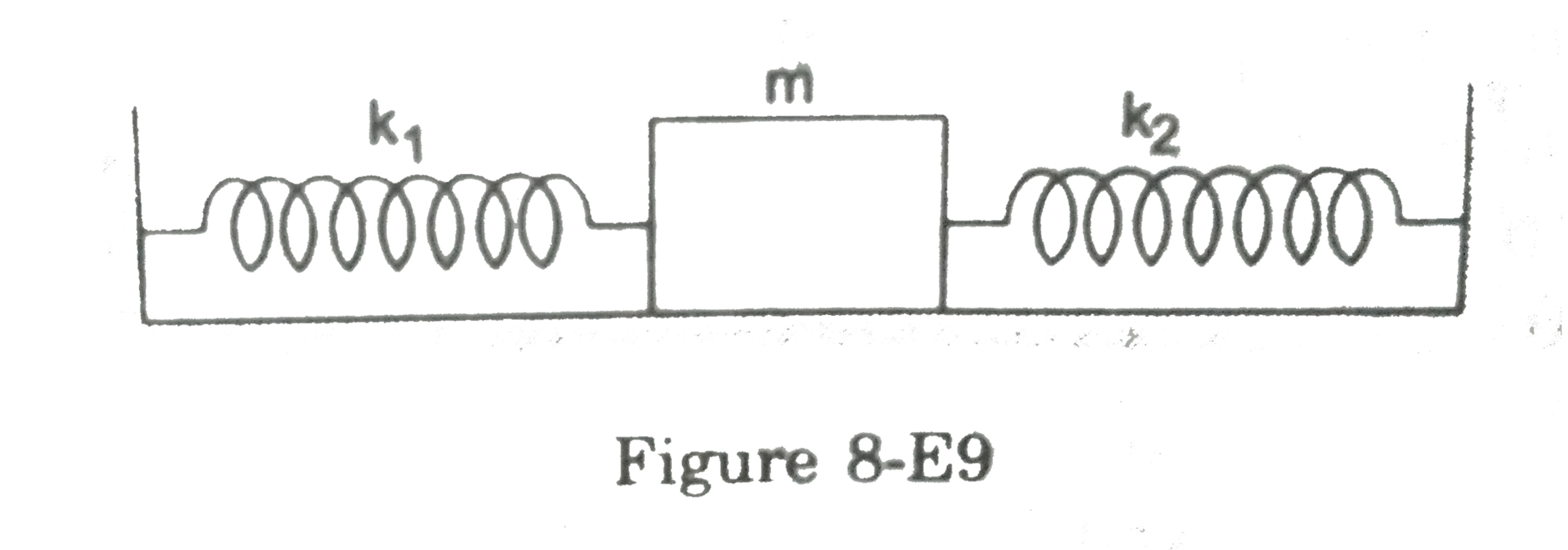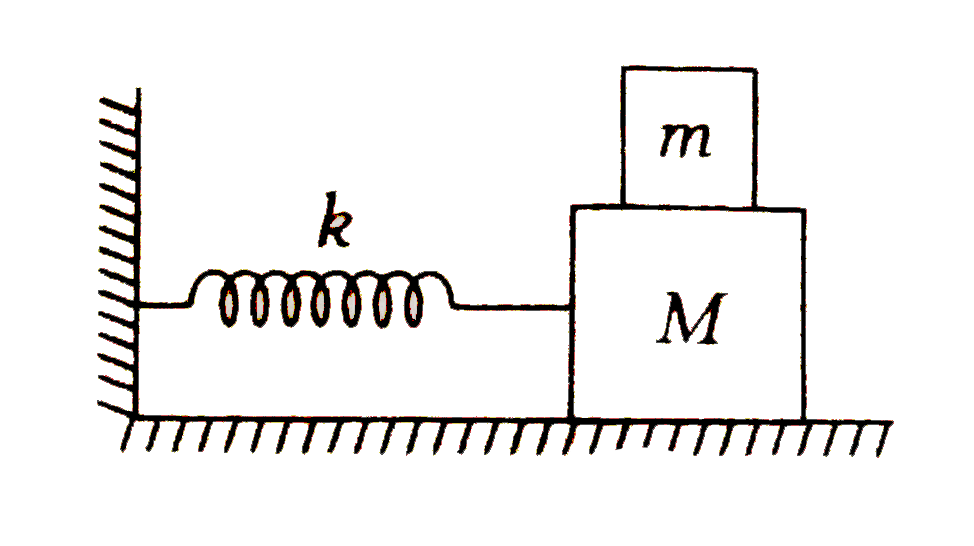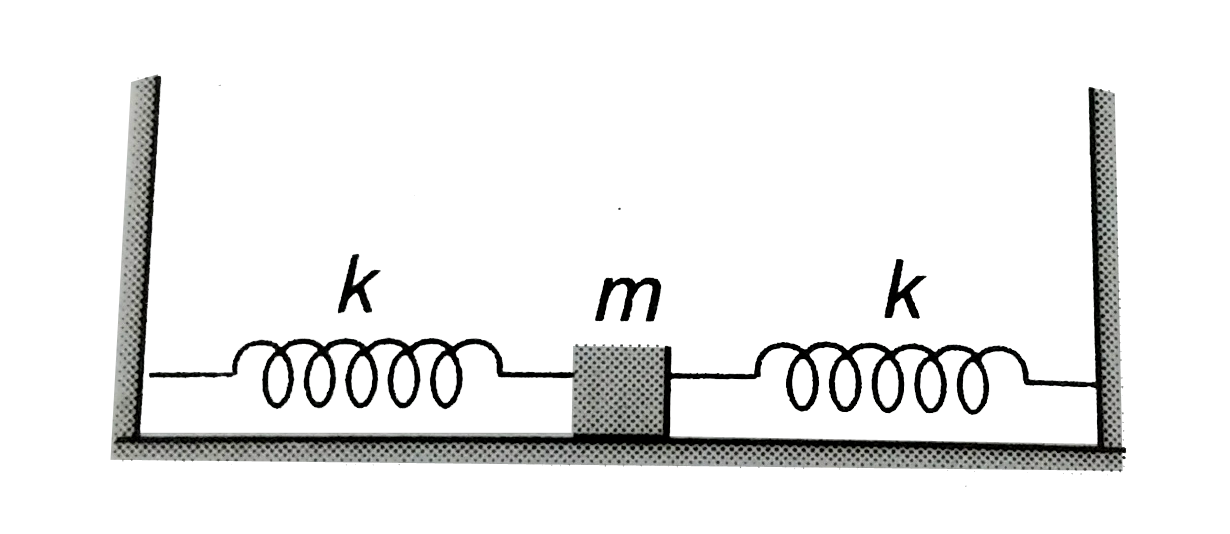In a horizontal spring - mass system mass m is released after being displaced towards right by some distance t=0 on a friction-less surface. The phase angle of motion in radian when it is first time passing through equilibrium position is equal to

π/2
π
3π/2
0
The correct Answer is:B
Step by step video & image solution for In a horizontal spring - mass system mass m is released after being displaced towards right by some distance t = 0 on a friction-less surface. The phase angle of motion in radian when it is first time passing through equilibrium position is equal to by Physics experts to help you in doubts & scoring excellent marks in Class 12 exams.
Updated on:21/07/2023Topper's Solved these Questions
- RACEBOOK - ALLENCHAPTER - RACEEXERCISE - Basic Maths (Oscillations) (Simple pendulum and types of SHM)
17 Videos
- RACEBOOK - ALLENCHAPTER - RACEEXERCISE - Basic Maths (Wave Motion & Dopplers Effect) (Fundamental)
23 Videos
- RACEBOOK - ALLENCHAPTER - RACEEXERCISE - Basic Maths (Dscillations) (Kinematics of SHM)
20 Videos
- NEWTONS LAWS OF MOTIONBOOK - ALLENCHAPTER - NEWTONS LAWS OF MOTIONEXERCISE - EXERCISE-III
28 Videos
- SIMPLE HARMONIC MOTIONBOOK - ALLENCHAPTER - SIMPLE HARMONIC MOTIONEXERCISE - Example
1 Videos
Similar Questions
A block of mass M is lying on a frictionless horizontal surface and it connected to a spring of spring constant k, whose other end is fixed to a wall, system executes simple harmonic motion of amplitude A0, when the block is passing through its equilibrium positions, an object of mass m is put on it and the two move together with a new time period T and amplitude A. Find the value of T and A in terms of given constants.
View SolutionA block of mass m is attached to two unstretched springs of spring constants k1andk2 as shown in figure. The block is displaced towards right through a distance x and is released. Find the speed of the block as it psses through the mean position shown.

View Solution
Knowledge Check
In a horizontal spring - mass m is released after being displaced toward right by same distance t=0 an a frictionless surface The phase angle of motion in ratio when it is first time passing through equlibrium possition is equal to
 Aπ2BπC3π2D0
Aπ2BπC3π2D0A mass M is attached to a horizontal spring of force constant k fixed one side to a rigid support as shown in figure. The mass oscillates on a frictionless surface with time period T and amplitude A. When the mass M is in equilibrium position, another mass m is gently placed on it. When will be the new amplitude of ocillation?

 A√(M+m)MAB√(M−m)MAC√M(M+m)AD√M(M−m)A
A√(M+m)MAB√(M−m)MAC√M(M+m)AD√M(M−m)AA light spring of force constant k is attached to a block of mass M placed on a horizontal firctionless surface from its one end and other end is fixed to a right support. The system is executing S.H.M. of amplitude A1 and time period T1. At some instant, the block passed through the equilibrium position and a small object of mass m is placed on it. The new amplitude and time period of the system now becomes A2 and T2 respectively.
The ratio T2T1 isA(M+m(M)1/2)B(M(M+m)1/2)C(M+m(m)1/2)D(mM)1/2)
A light spring of force constant k is attached to a block of mass M placed on a horizontal firctionless surface from its one end and other end is fixed to a right support. The system is executing S.H.M. of amplitude A1 and time period T1. At some instant, the block passed through the equilibrium position and a small object of mass m is placed on it. The new amplitude and time period of the system now becomes A2 and T2 respectively.
The ratio A2/A1 is
View SolutionA light spring of force constant k is attached to a block of mass M placed on a horizontal firctionless surface from its one end and other end is fixed to a right support. The system is executing S.H.M. of amplitude A1 and time period T1. At some instant, the block passed through the equilibrium position and a small object of mass m is placed on it. The new amplitude and time period of the system now becomes A2 and T2 respectively.
The velcities of block before and after the object is placed on it are V1 and V2 respectively. Then the ratio V2/V1
View SolutionIn the given figure, a mass M is attached to a horizontal spring which is fixed on one side to a rigid support. The spring constant of the spring is k. The mass oscillates on a frictionless surface with time period T and amplitude A. When the mass is in equilibrium position, as shown in the figure, another mass m is gently fixed upon it. The new amplitude of oscillation will be :

View Solution
A block of mass m is attached to two unstretched springs of spring constant k, each as shown. The block is displaced towards right through a distance x and is released The speed of the block as it passes through the mean position will be
View SolutionA block of mass m is attached to two unstretched springs of spring constants k1andk2 as shown in figure. The block is displaced towards right through a distance x and is released. Find the speed of the block as it psses through the mean position shown.

View Solution
